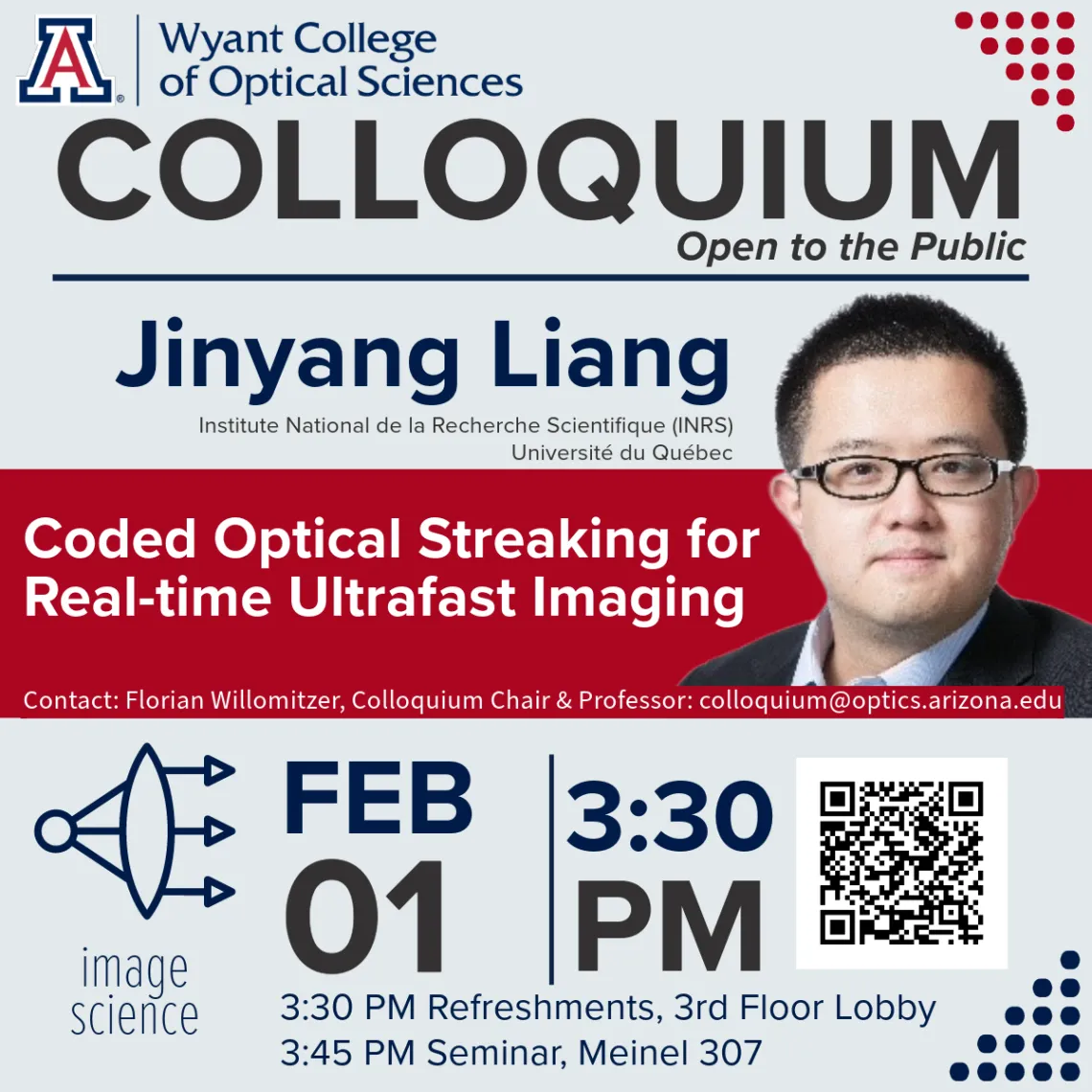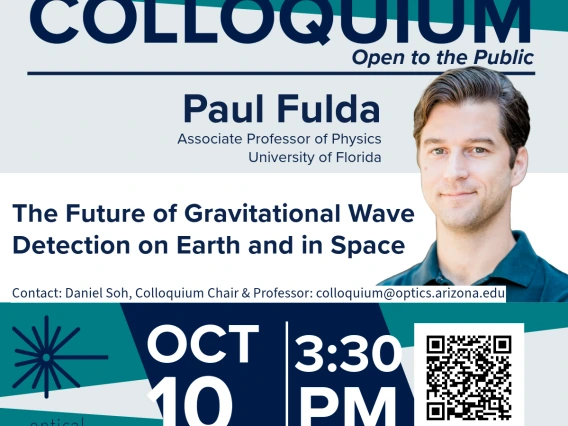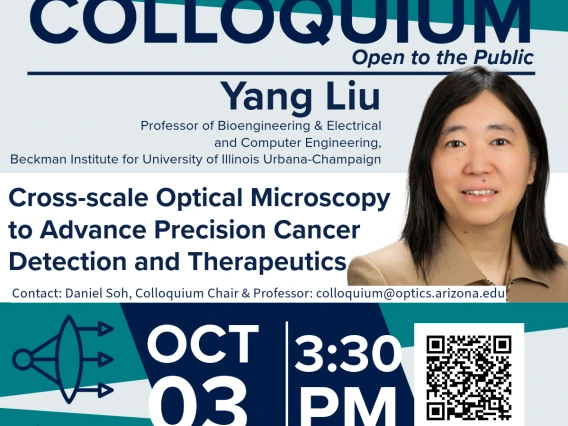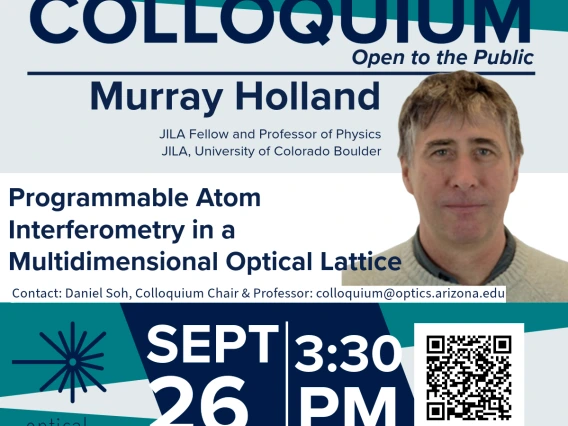OSC Colloquium: Jinyang Liang, "Coded Optical Streaking for Real-time Ultrafast Imaging"
Image Science

Title
Coded Optical Streaking for Real-time Ultrafast Imaging
Abstract
Visualizing transient events in the durations of their occurrences (i.e., real time) is indispensable to understanding many physical, chemical, and biological processes. Among existing methods, real-time ultrafast imaging based on coded optical streaking has received increasing attention because of its high image quality, high adaptability, and broad applicability. In this talk, I will review the working principles and limitations in representative ultrafast imaging modalities. Then, I will focus the discussion on three research directions in my Laboratory of Applied Computational Imaging in the past three years. First, I will present compressed optical-streaking ultrahigh-speed photography for the advanced characterization of rare-earth-doped nanoparticles for biomedical and information security applications [Nat. Commun. 12, 6401 (2021); Adv. Sci. (2024)]. Second, I will discuss how coded optical double-streaking can speed up single-pixel imaging to 12,000 frames per second [Nat. Commun. 13, 7879 (2022)] and coded-aperture temporal imaging to >100 trillion frames per second [Nat. Commun. (2024)]. Finally, I will show how the dynamic optical diffraction, generated by the microsecond transition between two masks loaded onto a programmable grating, can be used as a new gating mechanism for ultrafast mapping photography [Optica 10, 1223 (2023)].
Bio
Dr. Jinyang Liang is an Associate Professor at the Institut National de la Recherche Scientifique (INRS) – Université du Québec. He holds Canada Research Chair in Ultrafast Computational Imaging (Tier II). He directs the Laboratory of Applied Computational Imaging (LACI). His research interests cover ultrafast imaging, high-precision laser beam shaping, optical physics, and biophotonics. He has published >110 journal papers and conference proceedings including the ones in Nature (cover story), Nature Photonics, Nature Communications, and Science Advances. He has applied for >25 U.S./Canada patents on ultrafast optical imaging technologies. He is a Senior Member of Optica and SPIE. He serves as an Associate Editor of Optica’s Photonics Research and IEEE Transactions on Computational Imaging and as a Senior Editor of Springer’s PhotoniX. He received many awards, including the 2021 Emerging Excellence Prize from the Université du Quebec network, the 2019 Young Scientist Prize from IUPAP, and the 2017 Educational Award–Gold from Edmund Optics. He received his Ph.D. degree in Electrical Engineering from the University of Texas at Austin, in 2012. From 2012 to 2017, he was a postdoctoral trainee at Washington University in St. Louis and the California Institute of Technology.
Contact
Florian Willomitzer, Colloquium Chair & Professor: colloquium@optics.arizona.edu



